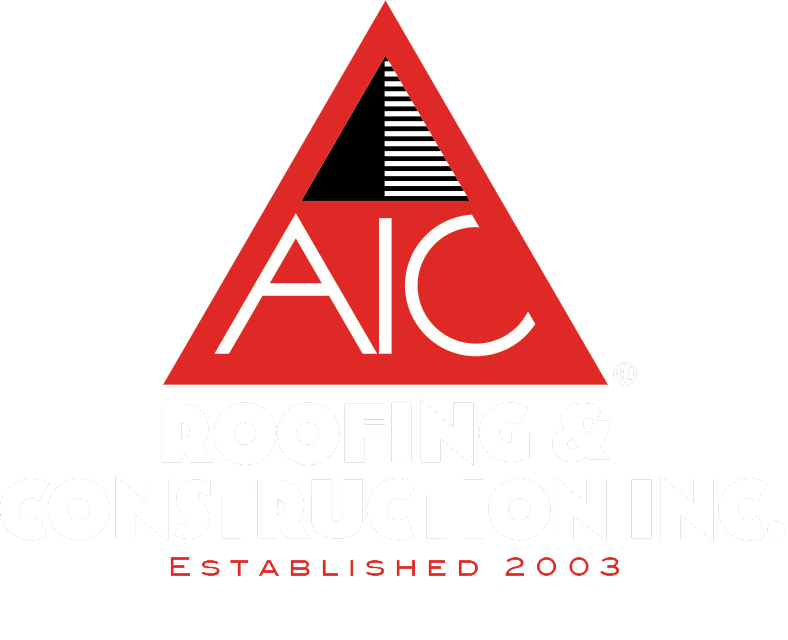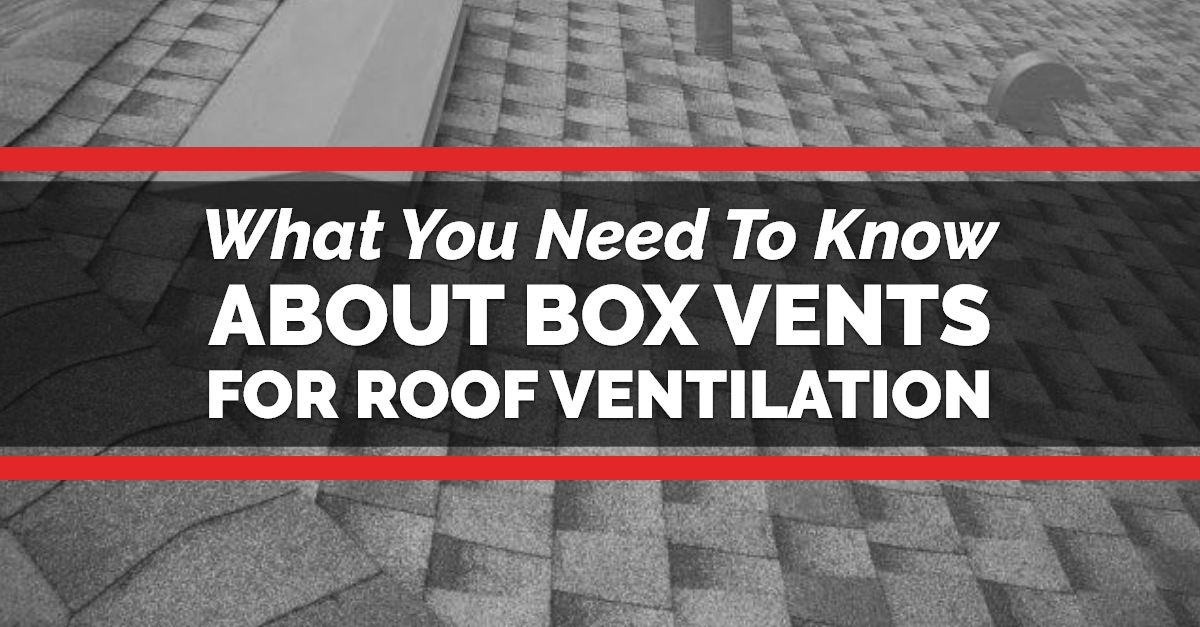A box vent, also known as a static vent or roof vent, is an essential component of a residential roofing system. It plays a crucial role in maintaining the overall health and functionality of the roof. Understanding the basics of residential roofing and the purpose of roof ventilation will give you a better grasp of the significance of box vents in ensuring a well-ventilated and durable roof.
At AIC Roofing and Construction, we’ve helped homeowners understand more about their roofing systems since 2003. In this article, we’ll explain the importance of proper ventilation and the consequences of poor ventilation. After reading this article, you’ll understand your roofing system and feel more confident making decisions about your roof repair or replacement!
Residential Roofing Systems 101
Residential roofing is more than just installing shingles or tiles on top of a house; it involves a complex system of components working together to protect the structure from the elements. Roofing materials, flashing, underlayment, and proper ventilation all contribute to the overall effectiveness of the roof.
When it comes to residential roofing, attention to detail is crucial. Every component has its specific function, and each must be carefully selected and installed to ensure the longevity and durability of the roof. From the choice of roofing materials to the installation techniques, every step is essential to create a roof that can withstand the test of time.
One of the most critical aspects of a residential roof is proper ventilation. While it may seem like a small detail, roof ventilation plays a significant role in maintaining the overall health and performance of the roof. It helps regulate temperature and moisture levels in the attic or crawl space, preventing the accumulation of heat and humidity that could lead to various issues such as mold and rot.
Additionally, effective roof ventilation helps extend the lifespan of roofing materials, reducing the risk of premature deterioration and costly repairs. Allowing air to circulate freely prevents the buildup of moisture that can weaken the structure and compromise its integrity. It also helps to reduce energy costs by preventing excessive heat buildup in the attic, which can lead to increased cooling needs.
The Importance of Roof Ventilation
Proper roof ventilation is crucial for maintaining a balanced and functional roofing system. It protects the roof and contributes to the entire house’s overall comfort and energy efficiency. Without adequate ventilation, the attic or crawl space can become a breeding ground for moisture-related problems, such as mold growth and wood rot.
Furthermore, improper ventilation can lead to the formation of ice dams during the winter months. These ice dams occur when warm air from the attic melts the snow on the roof, refreezing at the edges and creating a barrier that prevents proper drainage. This can result in water seeping into the roof and causing damage to the underlying structure.
Homeowners can avoid these issues and maintain a healthy and functional roofing system by ensuring proper roof ventilation. It is essential to consult with a professional roofing contractor who can assess the house’s specific needs and recommend the appropriate ventilation system.
Different Types of Roof Vents
Various types of roof vents are available on the market, each with its unique design and installation method. Common types include ridge vents, turbine vents, gable vents, and box vents. While all these vents serve the same purpose of ventilating the attic, box vents have specific advantages and are often preferred in residential roofing systems.
Box vents, also known as static vents or roof louvers, are simple and cost-effective ventilation solutions. They consist of a box-like structure with an opening on the top and a screen to prevent the entry of pests and debris. Box vents are typically installed near the roof’s peak, allowing hot air to escape from the attic while drawing in cool air through soffit vents or other intake sources.
One of the advantages of box vents is their low profile, which makes them less noticeable from the ground compared to other types of vents (namely, turbine vents). They also have no moving parts, meaning mechanical failure or maintenance issues are not risky. Additionally, box vents are relatively easy to install and can be retrofitted onto existing roofs without significant modifications.
However, it’s important to note that the effectiveness of box vents depends on proper placement and sufficient ventilation capacity. A professional roofer can determine the optimal number and location of box vents based on the size and layout of the attic, as well as the local climate conditions. Homeowners can enjoy a durable and long-lasting roofing system by choosing the right type of vent and ensuring its proper installation.
The Role of a Box Vent
A box vent is a type of roof vent that provides a passive exhaust for hot and moist air trapped inside the attic. Its simple yet effective design allows air to flow out of the attic, maintaining proper ventilation and preventing issues associated with excessive heat and humidity buildup.
Your attic can become a breeding ground for mold, mildew, and rot without adequate ventilation. This can lead to structural damage and compromise the integrity of your entire roof. That’s where a box vent comes in.
How a Box Vent Works
A box vent consists of a square or rectangular-shaped opening with a hood or cap to prevent rain and debris from entering the attic. The vent is installed at the roof’s peak, allowing hot air to escape as it rises. As the wind blows across the roof, it creates a pressure differential, drawing air out of the attic through the box vent. This natural airflow helps to regulate temperature and moisture levels, avoiding the potential damage caused by trapped heat and humidity.
Imagine a hot summer day with the sun beating down on your roof. Without proper ventilation, the attic can quickly become a stifling hotbox. However, with a box vent, the hot air can escape, creating a more comfortable environment and reducing the strain on your cooling system. This not only helps to keep your home cooler, but it also saves you money on energy bills.
The Benefits of Using a Box Vent
Box vents offer several benefits that make them an excellent choice for residential roof ventilation:
- Simple design: Box vents are straightforward, allowing easy installation and maintenance. You don’t need fancy equipment or specialized knowledge to install a box vent. It’s a simple yet effective solution.
- Cost-effective: Compared to other types of roof vents, box vents are generally more affordable. They provide a great bang for your buck, delivering excellent ventilation without breaking the bank.
- Effective passive ventilation: Box vents rely on natural airflow to exhaust hot air, making them a reliable and energy-efficient solution. Unlike powered ventilation systems that require electricity, box vents work silently and effortlessly, taking advantage of the natural forces at play.
- Durability: Made from durable materials such as metal or plastic, box vents are designed to withstand harsh weather conditions and last many years. They can withstand strong winds, heavy rain, and even hail, ensuring your roof remains protected and well-ventilated for a long time.
So, if you want to improve your attic’s ventilation and maintain a healthy roof, consider installing a box vent. Its simple design, cost-effectiveness, effective passive ventilation, and durability make it an excellent choice for any homeowner. Please don’t overlook the importance of proper ventilation, as it plays a crucial role in your roof’s overall health and performance.
Comparing Box Vents with Other Vent Types
Understanding the differences between box vents and other roof vents can help you make an informed decision when choosing the right ventilation solution for your residential roofing system.
Box Vents vs. Ridge Vents
Ridge vents, like box vents, provide exhaust for hot air in the attic. However, while box vents are installed at the roof’s peak, ridge vents are installed along the entire length of the ridge. Ridge vents offer better airflow and are more aesthetically pleasing as they blend seamlessly with the roofline. On the other hand, box vents are easier to install and generally more cost-effective.
Box Vents vs. Turbine Vents
Turbine vents, known as whirlybirds, use wind power to create airflow in the attic. Unlike box vents that rely solely on natural airflow, turbine vents have moving parts that spin with the wind, helping to exhaust hot air more efficiently. However, turbine vents may be noisier and require occasional maintenance to ensure proper functioning. As passive vents, box vents offer a more straightforward and durable solution without moving parts.
Next Steps: Schedule a Free Roofing System Inspection
A box vent is a vital component of a residential roof that helps maintain proper ventilation and prevent issues associated with excessive heat and humidity. Understanding your roofing system and ventilation’s role will empower you to make informed decisions about your roof and home.
Whether you choose box vents, ridge vents, or turbine vents, ensuring a well-ventilated roof will contribute to the longevity and functionality of your residential roofing system.
We recommend getting your roofing inspected annually to ensure your roofing system is functioning properly. Contact us today to schedule your free, no-hassle roof inspection.
AIC Roofing and Construction has served the Louisville, Lexington, and Richmond communities since 2003. We are proud to be in the top 2% of roofing contractors to hold the GAF MasterElite certification. If you’re looking for a top-rated Louisville roofing company – we’d love to see if we would be a good fit for your project.
3-tab attics barns chimney choosing a contractor commercial cost curb appeal DIY estimate financing flashing flat roof GAF glossary gutter replacement gutters gutter size gutter system ice dams inspections insurance missing shingles roof design roofing materials roofing system roof leak roof maintenance roof materials roof repair roof replacement roof shapes roof types shingle ratings shingles siding siding materials siding replacement skylights storm damage underlayment ventilation warranty winter







